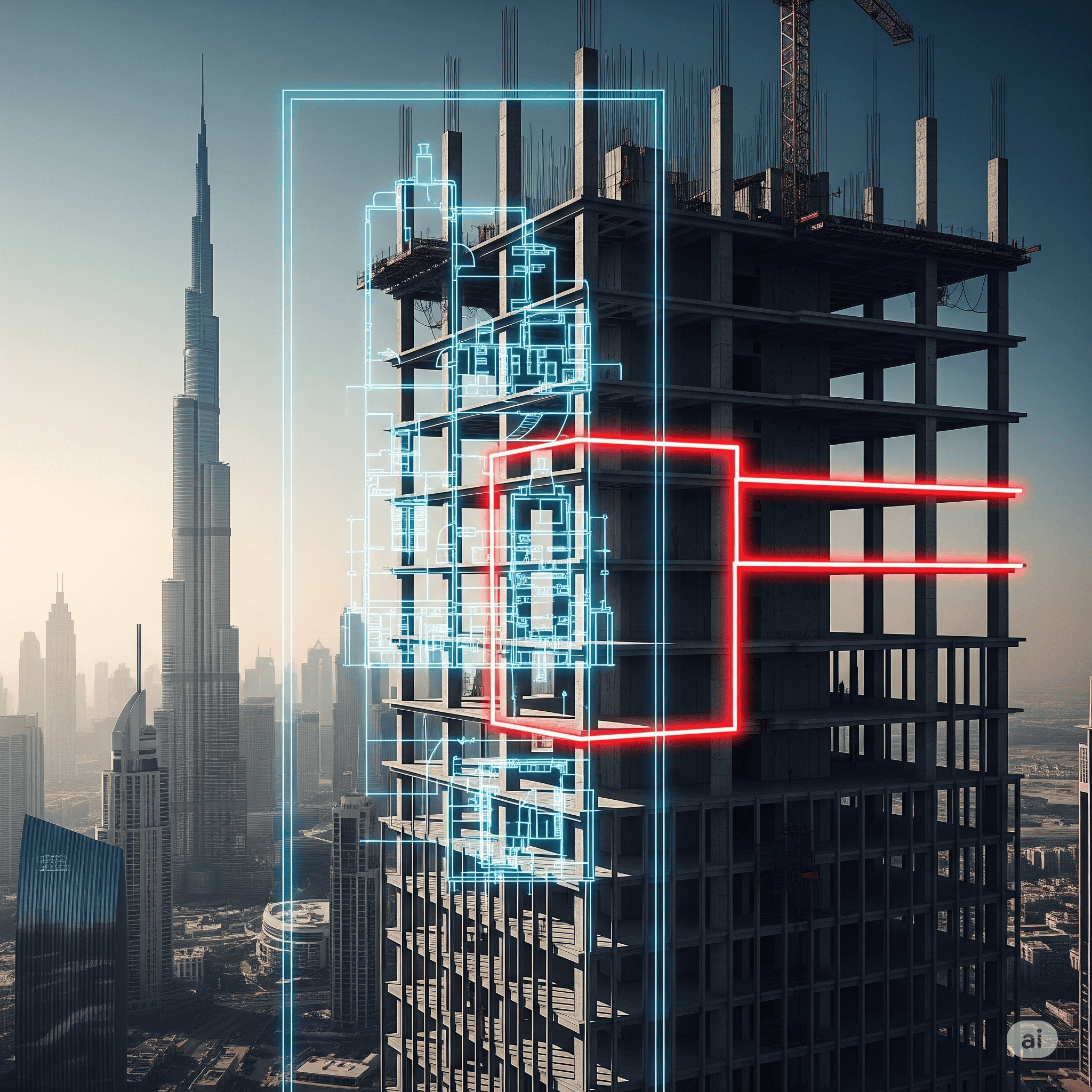Fire alarm systems are vital components in any building’s safety infrastructure. They detect fire hazards early and initiate alerts to ensure timely evacuation and emergency response.
In this guide, we’ll explore the essential components of a fire alarm system—ranging from detectors and control panels to notification appliances and backup power supplies.
Whether you’re planning a new installation or upgrading an existing system, understanding each component’s function and best use case is key to making informed decisions.
What is a conventional fire alarm system?
A conventional fire alarm system is a basic type of fire detection system that uses zonal identification to indicate fire locations.
It works by dividing a building into specific zones and connecting detectors (such as heat detectors) and alarms in a closed-loop electrical circuit.
When a fire is detected, the system identifies only the affected zone (e.g., Zone 3 – Second Floor), without indicating the specific device that was triggered.
What is an addressable fire alarm system?
An addressable fire alarm system is an advanced type of fire detection system that gives each connected device—such as detectors, call points, and alarms—a unique digital address.
This addressing capability allows the central control panel to precisely locate the source of an alarm (e.g., Smoke Detector – Floor 4 – Kitchen), enabling faster firefighting and safer evacuation by Civil Defence teams.
What is the difference between conventional and addressable fire alarm systems?
The key distinction between conventional and addressable fire alarm systems lies in their ability to detect and report fire incidents.
Conventional systems divide buildings into general zones and can only alert users to the area where the fire occurred—e.g., “Zone 3 – Second Floor”—without identifying the specific device involved.
In contrast, addressable systems assign a unique address to each device (such as “Heat Detector – Kitchen – Floor 4”), enabling exact location detection of fire or faults.
This core difference leads to variations in multiple areas:
- Accuracy
- Wiring method
- System intelligence
- Maintenance
- Cost
- Compliance with regulations
The following table shows the main differences:
Element
Conventional System
Addressable System
Location Detection
General area
Precisely identified detector
Installation
Simple closed circuit
Loop circuit
Intelligence
Basic alarm only
Detailed data
Initial Cost
Low
High
Long-Term Cost
Higher
More cost-effective
Usage
Allowed for small buildings
For high fire-risk buildings
Malfunction Detection
Requires manual inspection
malfunction appears directly on
Both systems share the same goal, which is to extinguish the fire, but the addressable system is more advanced in detection, monitoring, and disaster management, whereas the conventional system is a suitable solution for smaller projects.
To ensure your systems comply with UAE Civil Defence requirements, you can rely on the integrated fire protection solutions and services provided by Daem UAE.
1-Which Fire Alarm System Is More Accurate In Detecting The Fire Location: Conventional Or Addressable?
Addressable fire alarm systems provide significantly higher accuracy when detecting the location of a fire. Each device—whether it’s a smoke or heat detector—has a unique ID that appears on the control panel, enabling responders to pinpoint the exact source of the alert.
For example, an addressable smoke detector can offer location accuracy within ±3 metres, allowing faster response and evacuation.
In contrast, conventional systems only identify a general zone (e.g., “Third Floor”), which may include multiple rooms. This limited granularity can lead to delays and inefficiencies during emergencies.
As recommended in NFPA 72 and UAE Fire Code, high-accuracy detection is essential for multi-storey buildings and critical infrastructure.
2- What Is The Difference In Wiring Between Conventional And Addressable Systems?
Conventional systems are wired using a radical electrical circuit (Class B configuration: single path), while modern addressable systems use a dual loop circuit (Class A configuration: dual path).
In a radial circuit, all devices such as detectors and manual call points are connected in a single loop covering the area as one zone. As a result, a technical malfunction can shut down the entire section.
In contrast, a loop circuit provides an alternative path so if one cable is damaged, the signal continues through the second path without a complete shutdown, maintaining operation and increasing reliability.
According to the UAE Fire and Life Safety Code of Practice 2018:
An addressable system is legally required in the UAE for buildings with more than five floors, as it ensures continuous operation during emergencies.
3- Why Is an Addressable Fire Alarm System Considered More Intelligent Than a Conventional One?
Addressable fire alarm systems are significantly more intelligent than conventional ones due to their ability to process and transmit rich, real-time data.
Each device has a unique IP address stored in the control panel, enabling the system to report not just the fire signal, but also the exact detector location, the type of threat (smoke, heat, or flame), battery health, and contamination levels.
According to NFPA 72: 23.8.1.2.4, this advanced feedback helps technicians isolate faults and reduce maintenance time by up to 70% through self-diagnostic capabilities.
By contrast, conventional systems are limited to simple binary signaling (alarm/no alarm) and require manual inspection of the entire zone in case of a fault [NFPA 72: 17.7.1], leading to longer response time and higher operational costs.
The table below highlights the differences in intelligence level based on UAE standards:
Criterion
Addressable System
conventional System
Self-Diagnosis
Displays maintenance reports automatically on the control panel
No diagnostics requires manual inspection of the entire circuit
Disaster Adaptation
Supports smart evacuation: elevator control, emergency exit lighting
General alarm only
Remote Monitoring
Available
Not Available
4- Why Does Fault Detection Take Longer In Conventional Systems Compared to Addressable Systems?
Fault detection in conventional fire alarm systems is time-consuming because technicians must manually inspect every device on the affected circuit.
For example, if circuit 7 includes over 20 detectors, it could take between 2 to 5 hours to locate the exact fault.
In contrast, addressable systems instantly display the fault location on the control panel—such as “Heat Detector – Room 7”—and automatically isolate the faulty device without interrupting the rest of the system.
This smart diagnostic feature reduces maintenance time from hours to just a few minutes, improving system uptime and operational efficiency.
5- What Is The Cost Difference Between Conventional And Addressable Fire Alarm Systems In The UAE?
Conventional systems are less expensive initially because they rely on simple circuits (alarm units and detectors). However, they may lead to higher long-term costs due to the time required for manual inspections.
On the other hand, addressable systems require a higher upfront investment but reduce operational effort over time.
The table below shows where to choose each system:
type
Initial Budget
Suitable Facility
Total Cost Over One Year (AED )
Conventional
Limited
Warehouses without hazardous materials
Villas under 500 m²
130,000 – 200,000
Addressable
Flexible
Shopping malls
Skyscrapers
180,000 – 300,000
Choosing the right system depends not only on your budget but also on the building’s risk profile, size, and required compliance.
➨ Contact Daem UAE today for a cost-effective fire protection solution tailored to your facility.
6-Which Fire Alarm System Offers Better Compliance with the UAE Fire Prevention Code: Conventional or Addressable?
According to the UAE Fire and Life Safety Code of Practice (2018), addressable fire alarm systems are mandatory for buildings classified as high-risk—such as skyscrapers, malls, and warehouses storing hazardous materials. These systems provide accurate fire localization, which helps protect lives and property and ensures full regulatory compliance.
In contrast, conventional systems may only be used in low-risk facilities like residential homes or non-flammable storage units. However, installing conventional systems in any facility deemed hazardous—even if small—is strictly prohibited. Violations may result in penalties of up to AED 100,000.
➨ Daem UAE contracting provides fully compliant fire alarm solutions tailored to UAE Civil Defence regulations.
How to Choose Between Conventional and Addressable Fire Alarm Systems for Your Building in the UAE?
Choosing the Right Fire Alarm System for Your UAE Building
The UAE Fire and Life Safety Code identifies three key criteria for selecting between conventional and addressable fire alarm systems: building size, function, and regulatory classification.
If your building is medium to large (over 500 m²)—such as a warehouse storing flammable substances or a high-rise over five floors—you are legally required to install an addressable fire alarm system. Its advanced detection and location pinpointing enable faster Civil Defense response, minimizing damage and saving lives.
For small buildings (under 500 m²)—such as a private villa or small retail store—a conventional system may be sufficient. These spaces are easier to inspect manually, and the lower installation cost makes conventional systems a practical choice.
Important: To obtain Civil Defense approval for medium and large buildings, your fire alarm and suppression systems must be certified and designed according to UAE Code standards.
Your Optimal Fire Alarm Choice
While fire alarm systems may be suitable for small or low-risk buildings, addressable systems offer superior safety, faster response, and full compliance with the UAE Fire and Life Safety Code—making them the recommended choice for large-scale or high-risk facilities.
➨ Need a fire alarm system that meets UAE Civil Defence standards?
Daem UAE company provides end-to-end fire protection solutions—from certified system design and supply to installation and official approval.
Contact our experts today to ensure a safe, compliant, and delay-free project.
Frequently Asked Questions:
1. What are the components of fire alarm systems?
Fire alarm systems consist of a control panel, detection devices (smoke detector – heat detector), alarm devices, and a primary and backup power source.
2. What is the difference between a smoke detector and a heat detector?
A smoke detector senses smoke particles in the air, while a heat detector senses a rise in temperature above the normal level and converts this increase into an electrical signal that triggers the alarm.
3. Why are conventional zones on addressable panels allowed?
To support legacy devices and reduce costs in low-risk areas. Addressable panels can integrate conventional zones using zone monitor modules.
4.Can a conventional system be classified as addressable?
No. A system is only addressable if each device has a unique digital address and communicates individually with the control panel
5.How do addressable initiating devices trigger an alarm condition?
They send a digital signal with their ID, status, and location to the panel, which processes the data and activates the alarm based on programmed logic.

M. Hussam Almahmoud
Business Owner | DAEM CONTRACTING LLC Dubai
M. Hussam Almahmoud Graduated From Aleppo University BSC in Mechanical Engineering, CEO and partner In White Eagkes Hen trd ( established in 2005 , White Eagle Transport Est 2008 , City care Fire Est 2010 , Daem Contracting Est 2014 , Abraj Wa Mabani cont Est 2016 , White eagles gen trd LTD Est 2021 in Manchester UK , Partner in ICE Elektronik Dis Ticarat limited Sirketi Istanbul turkey




Comments are closed